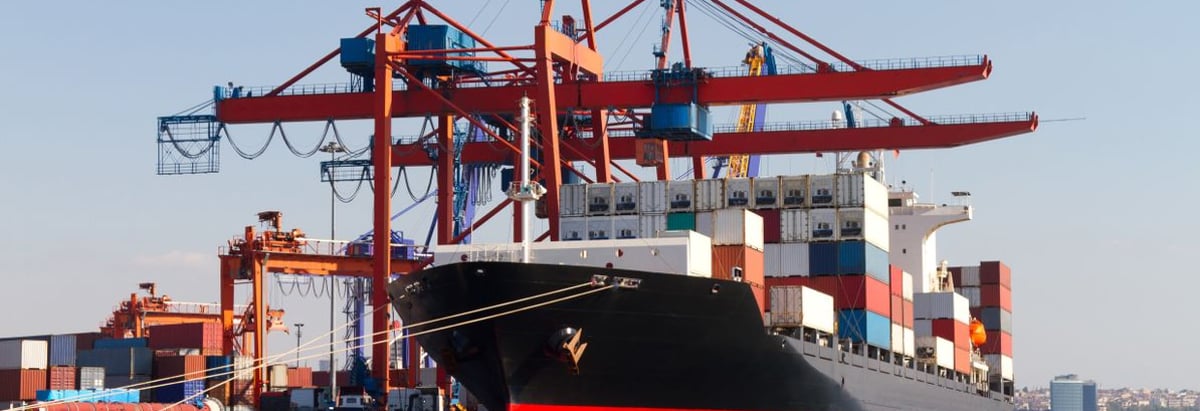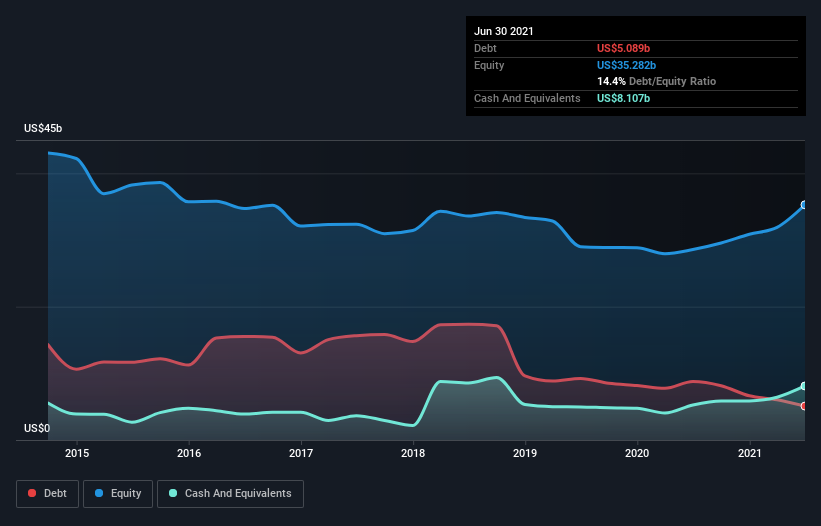- Denmark
- /
- Marine and Shipping
- /
- CPSE:MAERSK B
These 4 Measures Indicate That A.P. Møller - Mærsk (CPH:MAERSK B) Is Using Debt Safely

Howard Marks put it nicely when he said that, rather than worrying about share price volatility, 'The possibility of permanent loss is the risk I worry about... and every practical investor I know worries about.' It's only natural to consider a company's balance sheet when you examine how risky it is, since debt is often involved when a business collapses. We can see that A.P. Møller - Mærsk A/S (CPH:MAERSK B) does use debt in its business. But the real question is whether this debt is making the company risky.
When Is Debt A Problem?
Debt is a tool to help businesses grow, but if a business is incapable of paying off its lenders, then it exists at their mercy. Part and parcel of capitalism is the process of 'creative destruction' where failed businesses are mercilessly liquidated by their bankers. However, a more common (but still painful) scenario is that it has to raise new equity capital at a low price, thus permanently diluting shareholders. Of course, the upside of debt is that it often represents cheap capital, especially when it replaces dilution in a company with the ability to reinvest at high rates of return. When we examine debt levels, we first consider both cash and debt levels, together.
See our latest analysis for A.P. Møller - Mærsk
What Is A.P. Møller - Mærsk's Debt?
The image below, which you can click on for greater detail, shows that A.P. Møller - Mærsk had debt of US$5.09b at the end of June 2021, a reduction from US$8.78b over a year. But on the other hand it also has US$8.11b in cash, leading to a US$3.02b net cash position.

How Strong Is A.P. Møller - Mærsk's Balance Sheet?
Zooming in on the latest balance sheet data, we can see that A.P. Møller - Mærsk had liabilities of US$10.4b due within 12 months and liabilities of US$14.4b due beyond that. Offsetting these obligations, it had cash of US$8.11b as well as receivables valued at US$6.43b due within 12 months. So its liabilities outweigh the sum of its cash and (near-term) receivables by US$10.2b.
Of course, A.P. Møller - Mærsk has a titanic market capitalization of US$53.9b, so these liabilities are probably manageable. Having said that, it's clear that we should continue to monitor its balance sheet, lest it change for the worse. While it does have liabilities worth noting, A.P. Møller - Mærsk also has more cash than debt, so we're pretty confident it can manage its debt safely.
Even more impressive was the fact that A.P. Møller - Mærsk grew its EBIT by 356% over twelve months. If maintained that growth will make the debt even more manageable in the years ahead. The balance sheet is clearly the area to focus on when you are analysing debt. But ultimately the future profitability of the business will decide if A.P. Møller - Mærsk can strengthen its balance sheet over time. So if you want to see what the professionals think, you might find this free report on analyst profit forecasts to be interesting.
Finally, a business needs free cash flow to pay off debt; accounting profits just don't cut it. While A.P. Møller - Mærsk has net cash on its balance sheet, it's still worth taking a look at its ability to convert earnings before interest and tax (EBIT) to free cash flow, to help us understand how quickly it is building (or eroding) that cash balance. Over the last three years, A.P. Møller - Mærsk actually produced more free cash flow than EBIT. That sort of strong cash generation warms our hearts like a puppy in a bumblebee suit.
Summing up
Although A.P. Møller - Mærsk's balance sheet isn't particularly strong, due to the total liabilities, it is clearly positive to see that it has net cash of US$3.02b. And it impressed us with free cash flow of US$11b, being 155% of its EBIT. So we don't think A.P. Møller - Mærsk's use of debt is risky. There's no doubt that we learn most about debt from the balance sheet. However, not all investment risk resides within the balance sheet - far from it. These risks can be hard to spot. Every company has them, and we've spotted 2 warning signs for A.P. Møller - Mærsk (of which 1 doesn't sit too well with us!) you should know about.
If, after all that, you're more interested in a fast growing company with a rock-solid balance sheet, then check out our list of net cash growth stocks without delay.
When trading stocks or any other investment, use the platform considered by many to be the Professional's Gateway to the Worlds Market, Interactive Brokers. You get the lowest-cost* trading on stocks, options, futures, forex, bonds and funds worldwide from a single integrated account. Promoted
New: Manage All Your Stock Portfolios in One Place
We've created the ultimate portfolio companion for stock investors, and it's free.
• Connect an unlimited number of Portfolios and see your total in one currency
• Be alerted to new Warning Signs or Risks via email or mobile
• Track the Fair Value of your stocks
This article by Simply Wall St is general in nature. We provide commentary based on historical data and analyst forecasts only using an unbiased methodology and our articles are not intended to be financial advice. It does not constitute a recommendation to buy or sell any stock, and does not take account of your objectives, or your financial situation. We aim to bring you long-term focused analysis driven by fundamental data. Note that our analysis may not factor in the latest price-sensitive company announcements or qualitative material. Simply Wall St has no position in any stocks mentioned.
*Interactive Brokers Rated Lowest Cost Broker by StockBrokers.com Annual Online Review 2020
Have feedback on this article? Concerned about the content? Get in touch with us directly. Alternatively, email editorial-team (at) simplywallst.com.
About CPSE:MAERSK B
A.P. Møller - Mærsk
Operates as an integrated logistics company in Denmark and internationally.
Flawless balance sheet with solid track record and pays a dividend.
Similar Companies
Market Insights
Community Narratives



